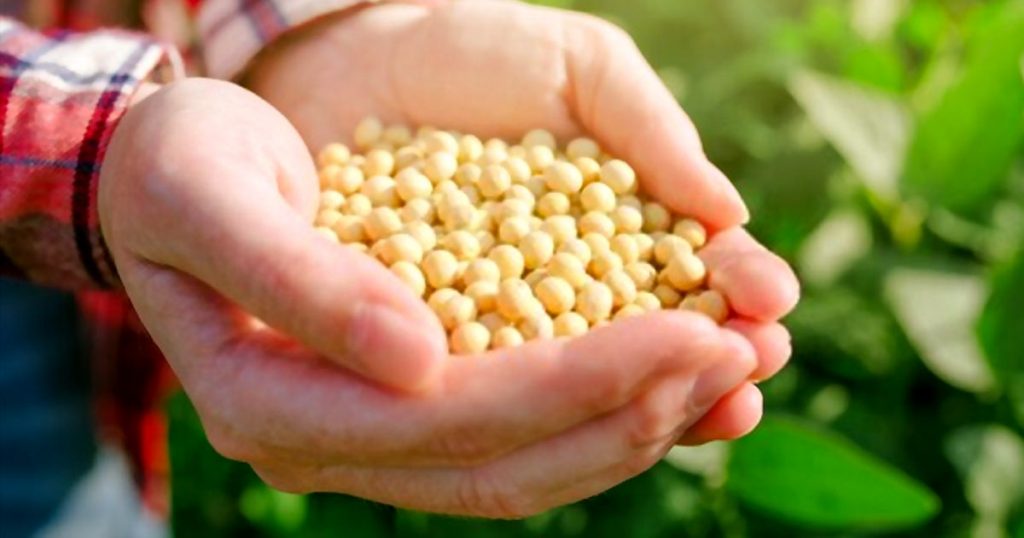Robyn O’ Brien, Author of The Unhealthy Truth states that nearly 75% of processed foods contain genetically modified organisms. Due to the increase in soy production from minimized costs, the percentage is only getting higher. What is genetically modified soy and where is it found? It may likely include but not be limited to:
- Vegetable oil and margarines made from soy, corn, canola and/or cottonseed
- Meat, eggs and dairy products from animals that eat GM feed
- Any ingredients derived from corn
- Any ingredients derived from soybeans
- Food additives such as MSG or “natural flavors”
Genetically Modified Soy (GM Soy)
According to GMO Compass, an online mecca of GMO industry information, 91% of soybeans grown in the US are genetically modified. Soybeans are genetically modified by inserting an herbicide resistant gene taken from bacteria into the soybean. This makes the soybean crop resistant to glyphosate or glufosinate herbicides, thereby increasing the amount of crop produced in a shorter span of time. More crop means more money for the soy industry, but at whose expense?
GM Soy: A Public Health Risk?
There was a study conducted at the Institute of Higher Nervous Activity and Neurophysiology of the Russian Academy of Sciences that says that GM soy does in fact pose a public health risk.
Flour from a genetically modified soya bean, (created by the brand Monsanto to be resistant to its pesticide) was added to the food of female rats two weeks before they conceived, throughout pregnancy term and after. They found that 55.6 percent of the young of those born to the mothers fed the diet with GM soya died within three weeks of being born, compared to the only nine percent of young who were fed normal soya and the 6.8 percent who were not fed soya at all.
This GM soya is being added to processed food in the USA and Americans are consuming it. It is in practically everything, from your local grocery store’s chips section to your nearest fast-food chain.
Health Hazards of Soy
Soy is a health hazard and has been linked to many conditions and diseases.
- Harvard University researchers reported that eating half a serving of soy a day lowers sperm concentrations and may play a role in male infertility, particularly in obese men. The reason isn’t clear; however, there has been speculation that soy increases estrogen activity, which may have a negative affect on sperm production which also interferes with other hormonal signals.
- The soybean is a phytoestrogen which has been linked to increased breast cancer risk, although there is much debate over this theory.
The greatest health risk of all is for those who suffer from food allergies. For those with life-threatening conditions such as anaphylactic shock to peanuts or soy, GMOs pose a very real threat that must be taken very seriously.
Food Allergies and GM Soy-Allergy
In order to fully understand the soy and corn industry and what is being added to food, one must do some research. In The Omnivore’s Dilemma by Michael Pollan, one fully begins to grasp the scope of what foods are now “contaminated” for those allergic to soy. With extensive research, the author journeys into the farms that benchmark GMO sophistication and warns of the many contamination facts that the industry doesn’t want the public to know. As with any booming industry, it all comes down to money. Many soy and corn processing machines are used simultaneously or not properly cleaned and can be contaminated with the other.
According to the book, not many things are “pure” or GMO-free. Those diagnosed with peanut-allergy have to be on the alert. According to a three year study done in Sweden, 61 reactions to food allergies occurred, four of them were fatal. If they include two deaths from food allergy from the year prior, two of the deaths were from peanuts and four were from soy. The four who died from anaphylaxis to soy had no known allergy to soy but had a severe allergy to peanuts. This means that those who have peanut-allergy are highly at risk for a severe soy reaction and must avoid soy derivatives and all genetically modified soy.
How To Protect Yourself
Avoidance of GMOs is not the easiest thing to do, nor is it very cost-effective, but the health benefits far outweigh the risk. Here are some suggestions to play it safe.
- Go Organic. One way to protect one’s health from the many dangers posing a threat to the average consumer is to go organic. There are many grocery stores that have organic fruits and vegetables; Trader Joes, Whole Foods and Wild By Nature are just a few healthier and safer alternatives to your neighborhood supermarket.
- Cook things from scratch using olive oil or real butter. You will know every ingredient in the food; this is a much safer alternative for those with food allergies.
- Research soy-free, gluten-free and peanut-free products on the internet. There is a plethora of companies looking out for those with food allergies; its just a matter of finding them.
- Write to your legislator or create a petition about the importance and need for laws that require GMO labeling on all products.

